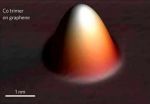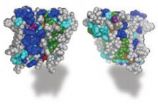(Press-News.org) Kyoto, Japan, Aug. 1, 2012 - A research group at the Center for iPS Cell Research and Application (CiRA) at Japan's Kyoto University has successfully recapitulated amyotrophic lateral sclerosis (ALS)-associated abnormalities in motor neurons differentiated from induced pluripotent stem cells (iPSCs) obtained from patients with familial ALS, a late-onset, fatal disorder which is also known for Lou Gehrig's disease. In a drug screening assay using the disease model, the team further found that the chemical compound anacardic acid can rescue some ALS phenotypes in vitro.
In a study published online in Science Translational Medicine, Associate Professor Haruhisa Inoue and his team generated motor neurons from iPSCs derived from three ALS patients with mutations in Tar DNA-binding protein-43 (TDP-43). The motor neurons showed cellular phenotypes including vulnerability to stress, shorter neurites, and cytosolic aggregates similar to those seen in postmortem tissues from ALS patients. The team also found that TDP-43 mRNA was upregulated in the ALS motor neurons, which means that TDP-43 autoregulation was disturbed, and that TDP-43 protein in detergent-insoluble form aggregated with the splicing factor SNRPB2 in the nucleus, perturbing RNA metabolism. These findings shed light on the mechanism of disease onset.
Using the motor neurons as a disease model, the researchers discovered that the chemical compound anacardic acid can rescue the abnormal ALS motor neuron phenotypes. For example, when anacardic acid, a histone acetyltransferase inhibitor, was sprinkled on the motor neurons, TDP-43 mRNA expression was decreased, and the length of the neurites increased.
''Our work represents an initial stage of drug screening for ALS using patient-specific iPSCs. TDP-43 is not only relevant to familial ALS but also to sporadic ALS, which represents the majority of ALS cases,'' said Inoue, a principal investigator at CiRA who is also one of research directors for the CREST research program funded by the Japan Science and Technology Agency. ''We will continue to work on ALS patient-specific iPSCs in order to help develop new drug seeds and candidates.''
INFORMATION:
Egawa et al. ``Drug Screening for ALS Using Patient-Specific Induced Pluripotent Stem Cells''
About CiRA
The Center for iPS Cell Research and Application (CiRA) was founded in 2008 at Kyoto University, Japan, and is a leading institute to advance induced pluripotent stem cell (iPSC) research. Professor Shinya Yamanaka serves as the director, and currently 27 principal investigators are working on various studies from basic research to applied studies using patient-specific iPSCs to achieve a goal to bring iPSC technology to the bed. URL: http://www.cira.kyoto-u.ac.jp/e/
A drug-screening platform for ALS
Anacardic acid found to rescue certain ALS abnormalities in experimental drug-screening assay using motor neurons from ALS patient-specific iPSCs
2012-08-02
ELSE PRESS RELEASES FROM THIS DATE:
Debris flows, landslides, fossil microatolls, paleo-seasonality, and carbonate ore deposits
2012-08-02
Boulder, Colo., USA – Two Geology studies focus on debris flows and landslides, one from the point of view of alpine denudation and the other studying and quantifying hazards to human populations. Subjects of other studies include fossil microatolls and sea level; the potential rupture area for an earthquake offshore of the U.S. Pacific Northwest and British Columbia; paleoclimate; and the relationship between the formation of ore deposits and the growth cycle of microbial communities.
Highlights are provided below. GEOLOGY articles published ahead of print can be accessed ...
A direct look at graphene
2012-08-02
Perhaps no other material is generating as much excitement in the electronics world as graphene, sheets of pure carbon just one atom thick through which electrons can race at nearly the speed of light – 100 times faster than they move through silicon. Superthin, superstrong, superflexible and superfast as an electrical conductor, graphene has been touted as a potential wonder material for a host of applications, starting with ultrafast transistors. For the vast potential of graphene to be fully realized, however, scientists must first learn more about what makes graphene ...
Global health researchers urge integrating de-worming into HIV care in Africa
2012-08-02
HIV care centers are an important and highly accessed point of care for HIV-infected children and their families in sub-Saharan Africa, but opportunities to address other health issues are being missed. Proven interventions, including routine deworming among young children, could be effectively integrated into HIV care according to a newly published article in PLoS by University of Washington researchers.
The article, "Integration of Deworming into HIV Care and Treatment: A Neglected Opportunity," estimates that millions of HIV-infected individuals in sub-Saharan Africa ...
UCLA-led project aimed at African American couples affected by HIV gets $2.5 million boost
2012-08-02
A UCLA-led project to implement a unique HIV intervention program aimed at reducing sexually risky behaviors and promoting healthier living among heterosexual African American couples has received a $2.5 million grant from the National Institute of Mental Health.
The program, based on Eban — a Yoruban concept from West Africa that symbolizes "safety, security and love within one's family and community" — is designed not only to reduce the risk of HIV and other sexually transmitted diseases but to increase couples' ability to communicate with each other, make safer behaviors ...
Is it a rock, or is it Jell-O? Defining the architecture of rhomboid enzymes
2012-08-02
Johns Hopkins scientists have decoded for the first time the "stability blueprint" of an enzyme that resides in a cell's membrane, mapping which parts of the enzyme are important for its shape and function. These studies, published in advance online on June 14 in Structure and on July 15 in Nature Chemical Biology, could eventually lead to the development of drugs to treat malaria and other parasitic diseases.
"[It's] the first time we really understand the architectural logic behind the structure of the enzyme," says Sinisa Urban, Ph.D., an associate professor of molecular ...
Mending a broken heart -- with a molecule that turns stem cells into heart cells
2012-08-02
LA JOLLA, Calif., August 2, 2012 – For years, scientists have been looking for a good source of heart cells that can be used to study cardiac function in the lab, or perhaps even to replace diseased or damaged tissue in heart disease patients. To do this, many are looking to stem cells. Researchers at Sanford-Burnham Medical Research Institute (Sanford-Burnham), the Human BioMolecular Research Institute, and ChemRegen, Inc. have been searching for molecules that convert stem cells to heart cells for about eight years—and now they've found one. Writing in the August 3 issue ...
Genetic copy-number variants and cancer risk
2012-08-02
Genetics clearly plays a role in cancer development and progression, but the reason that a certain mutation leads to one cancer and not another is less clear. Furthermore, no links have been found between any cancer and a type of genetic change called "copy-number variants," or CNVs. Now, a new study published by Cell Press in The American Journal of Human Genetics on August 2 identifies CNVs associated with testicular cancer risk, but not with the risk of breast or colon cancer.
Some cancers, including breast and colon cancer, are caused by mutations that are passed ...
It's in our genes: Why women outlive men
2012-08-02
Scientists are beginning to understand one of life's enduring mysteries - why women live, on average, longer than men.
Published today in Current Biology, research led by Monash University, describes how mutations to the DNA of the mitochondria can account for differences in the life expectancy of males and females. Mitochondria, which exist in almost all animal cells, are vital for life because they convert our food into the energy that powers the body.
Dr Damian Dowling and PhD student, Florencia Camus, both from the Monash School of Biological Sciences, worked with ...
'Unhealthy' changes in gut microbes benefit pregnant women
2012-08-02
The composition of microbes in the gut changes dramatically during pregnancy, according to a study published by Cell Press in the August 3rd issue of the journal Cell. Although these changes are associated with metabolic disease under most circumstances, they could be beneficial in pregnant women.
"This is the first in-depth characterization of the gut microbiota associated with pregnancy," says senior study author Ruth Ley of Cornell University. "The findings suggest that our bodies have coevolved with the microbiota and may actually be using them as a tool—to help alter ...
Scripps Florida scientists identify a critical tumor suppressor for cancer
2012-08-02
JUPITER, FL – August 2, 2012 – Scientists from the Florida campus of The Scripps Research Institute have identified a protein that impairs the development and maintenance of lymphoma (cancer of the lymph nodes), but is repressed during the initial stages of the disease, allowing for rapid tumor growth.
While the study, published in the August 3, 2012 edition of the journal Cell, largely focuses on the role of this new tumor suppressor in lymphoma induced by Myc oncoproteins (the cancer-promoting products of Myc oncogenes), the authors show this circuit is apparently operational ...
LAST 30 PRESS RELEASES:
Experiments advance potential of protein that makes hydrogen sulfide as a therapeutic target for Alzheimer’s disease
Examining private equity’s role in fertility care
Current Molecular Pharmacology achieves a landmark: real-time CiteScore advances to 7.2
Skeletal muscle epigenetic clocks developed using postmortem tissue from an Asian population
Estimating unemployment rates with social media data
Climate policies can backfire by eroding “green” values, study finds
Too much screen time too soon? A*STAR study links infant screen exposure to brain changes and teen anxiety
Global psychiatry mourns Professor Dan Stein, visionary who transformed mental health science across Africa and beyond
KIST develops eco-friendly palladium recovery technology to safeguard resource security
Statins significantly reduce mortality risk for adults with diabetes, regardless of cardiovascular risk
Brain immune cells may drive more damage in females than males with Alzheimer’s
Evidence-based recommendations empower clinicians to manage epilepsy in pregnancy
Fungus turns bark beetles’ defenses against them
There are new antivirals being tested for herpesviruses. Scientists now know how they work
CDI scientist, colleagues author review of global burden of fungus Candida auris
How does stroke influence speech comprehension?
B cells transiently unlock their plasticity, risking lymphoma development
Advanced AI dodel predicts spoken language outcomes in deaf children after cochlear implants
Multimodal imaging-based cerebral blood flow prediction model development in simulated microgravity
Accelerated streaming subgraph matching framework is faster, more robust, and scalable
Gestational diabetes rose every year in the US since 2016
OHSU researchers find breast cancer drug boosts leukemia treatment
Fear and medical misinformation regarding risk of progression or recurrence among patients with breast cancer
Glucagonlike peptide-1 receptor agonists and asthma risk in adolescents with obesity
Reviving dormant immunity: Millimeter waves reprogram the immunosuppressive microenvironment to potentiate immunotherapy without obvious side effects
Safety decision-making for autonomous vehicles integrating passenger physiological states by fNIRS
Fires could emit more air pollution than previously estimated
A new way to map how cells choose their fate
Numbers in our sights affect how we perceive space
SIMJ announces global collaborative book project in commemoration of its 75th anniversary
[Press-News.org] A drug-screening platform for ALSAnacardic acid found to rescue certain ALS abnormalities in experimental drug-screening assay using motor neurons from ALS patient-specific iPSCs




